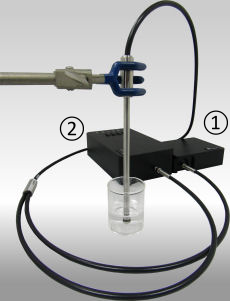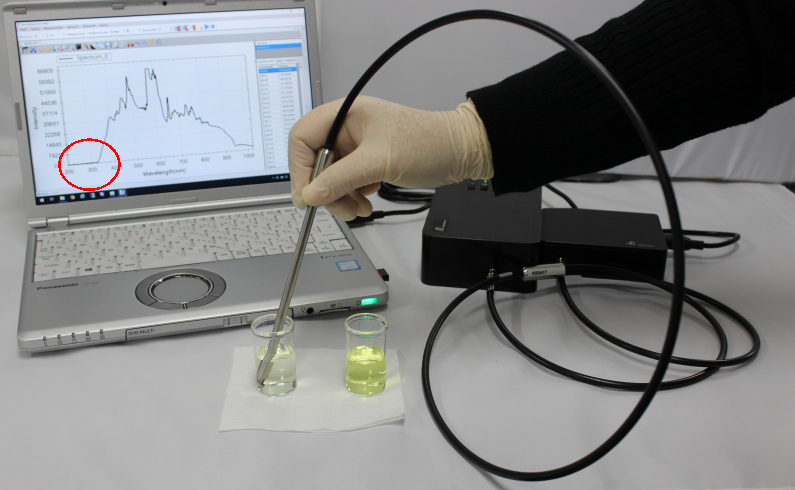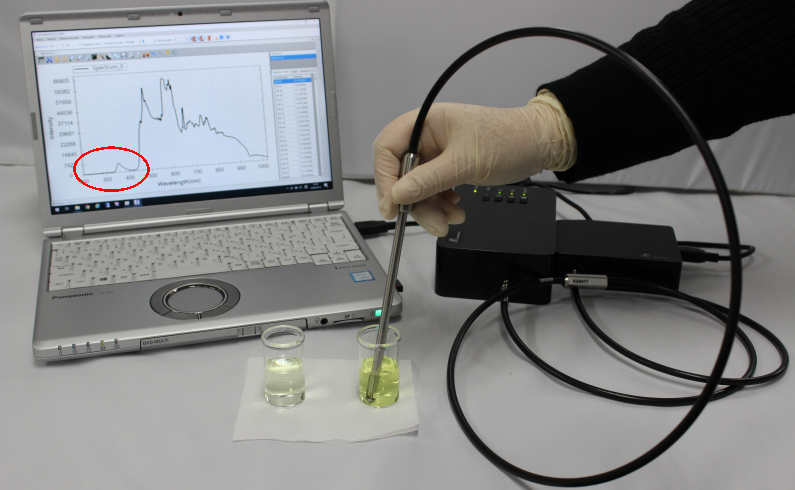Application - using optical fiber probes (Transmission dip probe).
Since immersion probe is measured by immersing the probe directly in the sample, troublesome sampling is unnecessary, it could amplify the experimental application field.
Reflection spectra measurement using transmission dip probe
The transmission dip probe consists of two 300 µm fibers, one is for light irradiation and the other is for detector (spectrometer).
Tips are lined up according to the optical path length, and you can choose from 2, 5, 10, and 20 mm, which is screwed to the extremity of the probe.
This probe is ideal for monitoring over time, as it does not require sampling.

① Spectrometer
② Light source
Measurement example
SEC2020 Spectrometer system with a transmission dip probe was used only to show the rapid response of the spectrum change according to the immersion to the measured solution.
2 mM Potassium ferricyanide (K3[Fe(CN)6]) in 1 M Potassium nitrate (KNO3) and 2 mM Potassium ferrocyanide (K4[Fe(CN)6]) in 1 M Potassium nitrate (KNO3), prepared on Basics of Electrochemical and Spectroelectrochemical measurements - Sample preparation was used to show the difference in the spectrum generated when immersing the probe to the solution to be measured.


Spectrum blank, without immersing to the sample.


Spectrum when immersing to 2 mM Potassium ferrocyanide (K4[Fe(CN)6]) in 1 M Potassium nitrate (KNO3) solution.


Spectrum when immersing to 2 mM Potassium ferricyanide (K3[Fe(CN)6]) in 1 M Potassium nitrate (KNO3) solution.
In this measurement Tranmission dip probe with a 10 mm Pathlength tip was used.
Accessories for SEC2020 Spectrometer
| Catalog No. | Description |  |
| 012780 | Transmission dip probe | |
| 012784 | PD-U20 20 mm tip | |
| 012781 | PD-U10 10 mm tip | |
| 012782 | PD-U5 5 mm tip | |
| 012783 | PD-U2 2 mm tip |

